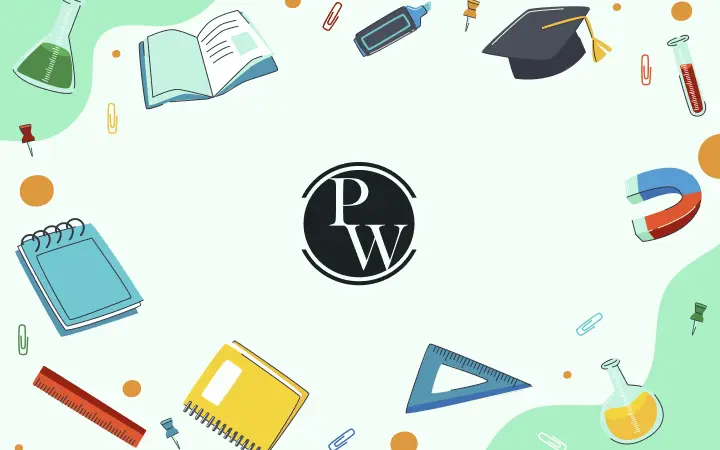
Money Multiplier Formula: Money performs a crucial role in each financial system. It not only serves as a medium of change, but also helps the functioning of the whole banking and financial system. One of the most crucial concepts of Money Multiplier is that it allows us to identify how cash circulates and expands in the financial system is the money Multiplier. Below, we can see what the money multiplier is, how it works, and how to calculate it using the money Multiplier Formula.
What is Money Multiplier?
The Money Multiplier refers back to the way a small amount of money deposited into a bank can lead to a larger overall increase in the money supply. It’s an easy concept. While banks acquire deposits, they keep a portion as reserves and lend out the rest. The money that’s lent out is then spent, deposited again, and lent out yet again.
This process keeps repeating, and with every round, the original deposit results in more money being circulated. The money Multiplier tells us how commonly the deposited money can be reused in the financial system through this cycle.
Also Check: Limits To Credit Creation and Money Multiplier
Importance of the Money Multiplier
This concept may sound technical, but it directly connects to how credit flows, how inflation is controlled, and how regulations are formed. When the Reserve Bank of India changes the amount banks have to hold as reserves or adjusts lending rates, it affects the complete chain of cash creation.
A deeper understanding of the money Multiplier helps in grasping how those coverage moves affect everyday existence. It additionally tells us how business banks, via lending, help the monetary sectors like home loans, business investments, and infrastructure improvement.
Money Multiplier Formula
To calculate the impact of reserves on the money supply, we use the Money Multiplier Formula. The basic formula is:
Money Multiplier = 1 / Reserve Ratio
Where:
- Money Multiplier is the factor by which the money supply increases.
- Reserve Ratio is the percentage of deposits that banks are required to keep as reserves.
Let’s take an example. If the reserve ratio is 10%, or 0.10 in decimal form, then:
Money Multiplier = 1 / 0.10 = 10
This means for every ₹1,000 deposited in the banking system, the total money supply can grow up to ₹10,000 through multiple lending and deposit cycles.
How the Money Multiplier Works
Let us understand how the Money Multiplier functions in a step-by-step manner:
First Deposit: A person makes a ₹1,000 bank deposit.
Bank Keeps Reserves: If the reserve ratio is 10%, the bank keeps ₹100 and lends out ₹900.
Second Deposit: The ₹900 is spent and eventually deposited into another bank.
Second Bank Keeps Reserves: This bank keeps ₹90 and lends out ₹810.
The Cycle Continues: More money is created in the economy each time funds are deposited and partially lent out.
Until the total quantity of money generated gets close to the maximum permitted by the Money Multiplier Formula, this process keeps going.
Factors Affecting the Money Multiplier
The following variables may affect the Money Multiplier's value:
Reserve Requirements: A higher reserve ratio lowers the multiplier because banks are required to hold more money and lend less.
Public Behavior: If people prefer to keep cash rather than deposit it in banks, the Money Multiplier will be lower.
Banking Policies: Conservative lending practices can reduce the amount of money banks create, reducing the multiplier effect.
Monetary Policies: Central banks like the Reserve Bank of India (RBI) use monetary policy tools to influence interest rates and reserve requirements, thereby impacting the Money Multiplier.
Practical Applications of the Money Multiplier
Understanding how the Money Multiplier works in real-life situations helps understand its practical value in the economy. Below are some key areas where it plays an important role:
Policy Making: Governments and central banks use the Money Multiplier formula to forecast the effect of changing reserve requirements on money supply.
Banking Sector Analysis: Economists and financial analysts use the concept to assess how well banks are performing in terms of credit creation.
Inflation Control: A high Money Multiplier can lead to excess money in circulation, which may cause inflation. Monitoring the multiplier helps manage inflation risks.
Economic Forecasting: The multiplier effect helps forecast economic growth patterns based on the availability and expansion of credit.
Limitations of the Money Multiplier
While the Money Multiplier Formula provides a basic understanding of money creation, it has certain limitations:
Assumes Full Loan Utilization: It assumes that all money lent by banks is redeposited and re-lent, which may not happen in real life.
Neglects Cash Leakages: Not all money stays in the banking system; some may be kept as cash by individuals.
Changes in Confidence: In times of economic uncertainty, people may withdraw cash, and banks may reduce lending, reducing the multiplier.
How Governments Use the Money Multiplier
The government and central banks closely monitor the Money Multiplier to ensure a stable economy. By adjusting the reserve ratio and utilizing tools such as repo rates, the RBI can either increase or decrease the money supply. In times of recession, reducing the reserve ratio can boost the Money Multiplier, encouraging banks to lend more and support economic growth.
The Money Multiplier is a key concept that shows how deposits can expand the money supply through a cycle of lending and re-depositing. By understanding the Money Multiplier Formula, one can see how banking operations and monetary policies affect the economy. Though it has limitations, it remains a powerful tool for analyzing and predicting economic trends.
Whether you are a student of economics, a policymaker, or just someone interested in how money works, knowing how the Money Multiplier functions gives you valuable insight into the flow of money in our economy.
Join PW Commerce Online Course and unlock your potential with quality education and dedicated learning support.
Money Multiplier Formula FAQs
What is the Money Multiplier?
What is the Money Multiplier Formula?
Why is the Money Multiplier important?
Can the Money Multiplier be affected by public behavior?










